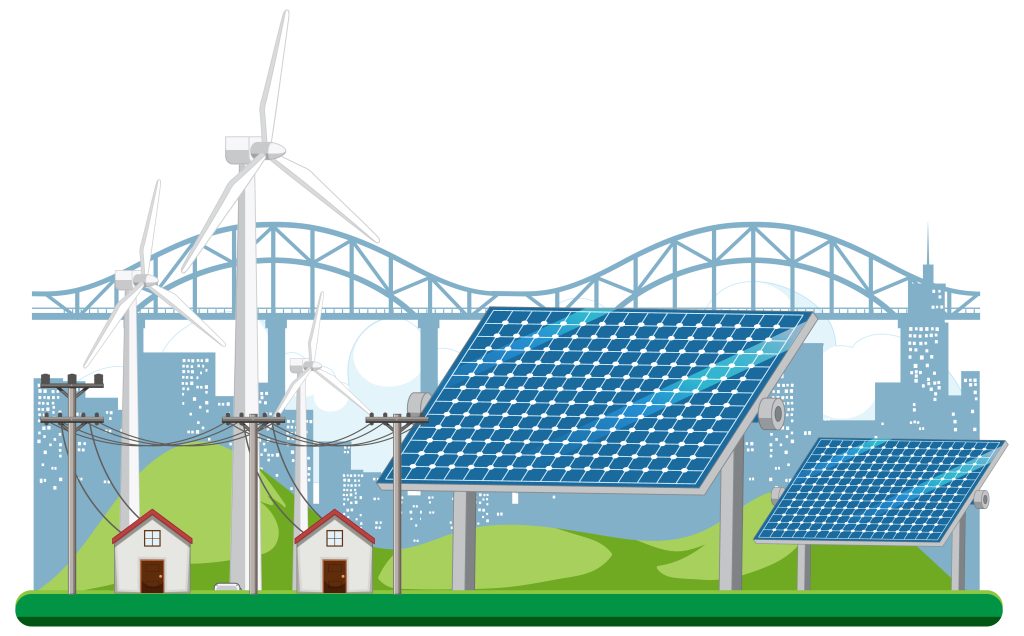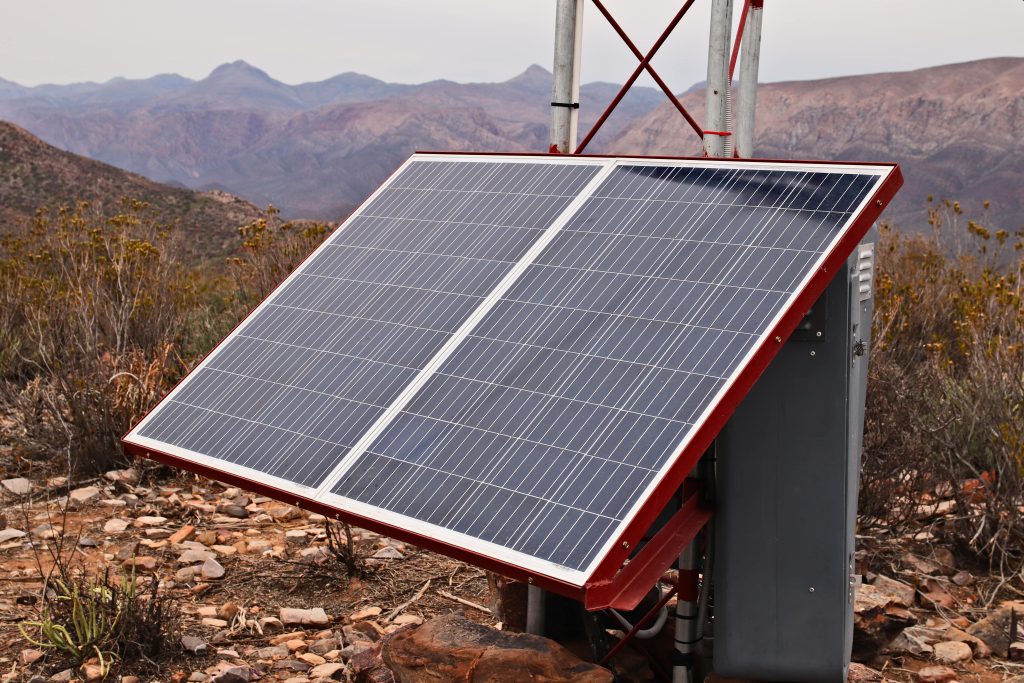Off-Grid / Stand-alone Solar system
Also known as stand-alone solar systems, off-grid solar systems provide grid-like electricity. They are installed where grid electricity is either unavailable or has unreliable grid power. Off-grid solar systems consist of roof or ground-mounted solar panels, a battery to store energy, an integrated backup diesel generator and an Inverter and Charger controllers to act as an interface between the different inputs.
Since off-grid solar systems are customizable based on the client demand, the size is variable and can be designed to run one appliance or an entire township.
A back-up diesel generator is integrated with the off-grid solar system in case of bad weather or more demand in energy
Since off-grid solar systems are customizable based on the client demand, the size is variable and can be designed to run one appliance or an entire township.
A back-up diesel generator is integrated with the off-grid solar system in case of bad weather or more demand in energy
Who is it Meant For?
Aussie homes in a remote location or homeowners who are moving into an existing
house, adding a removable house or building a new house then off grid solar systems is the best solution as compared to connecting to the grid. In case of no access to the
national electricity grid, We can set up high quality off grid solar systems that are the perfect option as a complete stand-alone power system.
We have the knowledge and professional experience of providing quality end-to-end solutions from design to installations to intenance. By using local installers we are able to provide service and backup to our customers ensuring systems are maintained or repaired promptly, quickly going back into service.
We have the knowledge and professional experience of providing quality end-to-end solutions from design to installations to intenance. By using local installers we are able to provide service and backup to our customers ensuring systems are maintained or repaired promptly, quickly going back into service.
Off-grid solar systems – autonomy
Looking at the design of an off-grid system from a professional point of view, it is recommended to have at least 1.5 – 2 days autonomy in your battery bank. This is IF there is a backup generator present. Without a generator the “autonomy” time is recommended to be increased to 2-3 days.
The autonomy time is the daily usage times and means that with low or no sunlight
during bad weather, you will have enough power to run all your appliances as normal,
without the generator needing to come on.
To calculate the size of the battery bank you take your daily kWh usage and multiply it by the number of days you would like to have autonomy. For example, if you use 10kWh per day and would like 2 days autonomy, you would need to have a battery bank which has 20kWh of usable storage.
To calculate the size of the battery bank you take your daily kWh usage and multiply it by the number of days you would like to have autonomy. For example, if you use 10kWh per day and would like 2 days autonomy, you would need to have a battery bank which has 20kWh of usable storage.

Stepwise Consultation :
Step 1
Consultation
After you contacted us via phone, email, or our online form, our friendly staff will arrange for a site visit. We will evaluate your available roof space and help analyse your energy usage and costs.
A proposal request can be made without a site visit, as well.
A proposal request can be made without a site visit, as well.
Step 2
Proposal
Our staff will prepare a proposal based on information requested and provided, which
outlines the system equipment, contract cost, state rebate amount, and federal tax credit.
The proposal will also include the statistics, graphs and calculations along with the proposed layout of panels on roof.
We believe in enabling our customers making an informative decision, hence, the designing is laso done at proposal stage before signing the contract.
The proposal will also include the statistics, graphs and calculations along with the proposed layout of panels on roof.
We believe in enabling our customers making an informative decision, hence, the designing is laso done at proposal stage before signing the contract.
Step 3
Contract
After you have reviewed the proposal and accepted and sign the contract, we will process the paperwork for rebate and approval from energy provider and begin the
project.
Step 4
Installation
We will take care of all material procurement, permits, engineering and installation. Also, the commissioning of inverter and setting up the inverter to app on your phone/Tablet.
Congratulations! phone casessonix phone caseselfbar 4000 puffstelefoonhoesjes a32 4g Your new system is now helping you save money, and the environment!
Congratulations! phone casessonix phone caseselfbar 4000 puffstelefoonhoesjes a32 4g Your new system is now helping you save money, and the environment!
Advantages of Off-Grid Solar System
- Off-grid systems are extremely hassle-free and easy to maintain, fully automated and can be monitored and controlled online.
- You will be part of a sustainable solution having a large supply of renewable energy and huge savings. Example: A typical off-grid homeowner saves around $20,000 a month, for over 20 years.
- Off-grid Solar systems produce good quality energy and you will less likely to face blackouts.
- This power quality is better than the average grid electricity and will extend the lifespan of your appliances and machinery.

